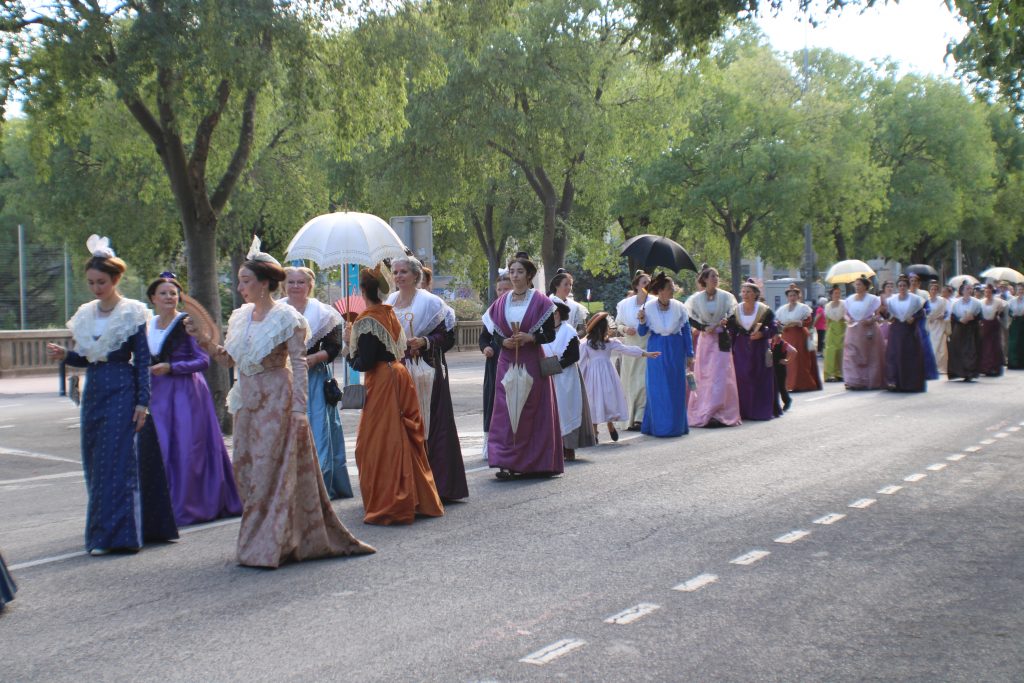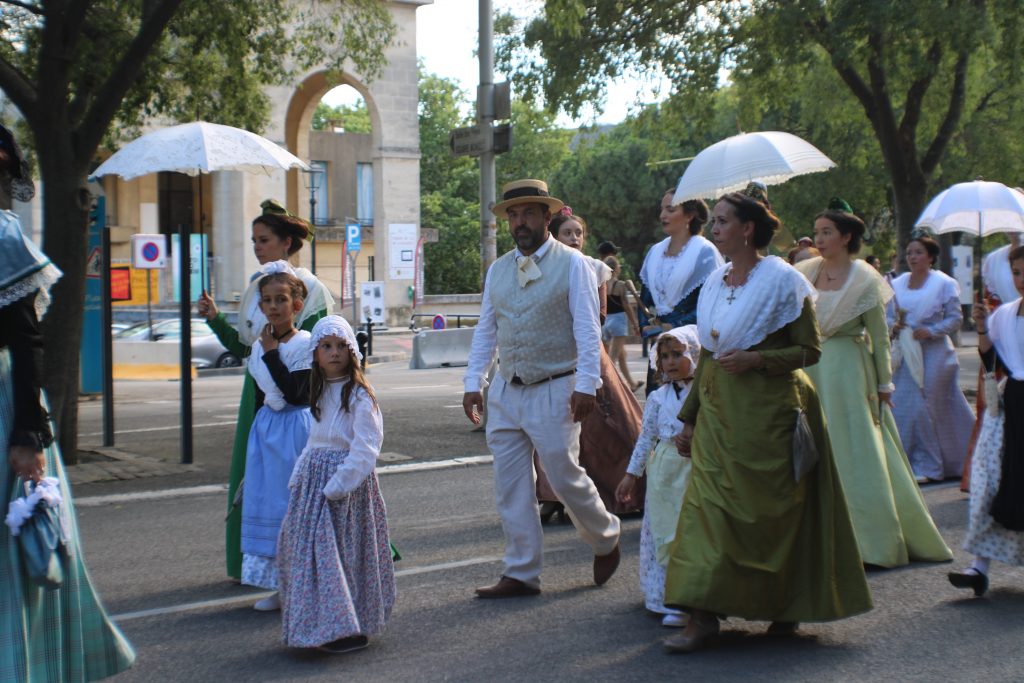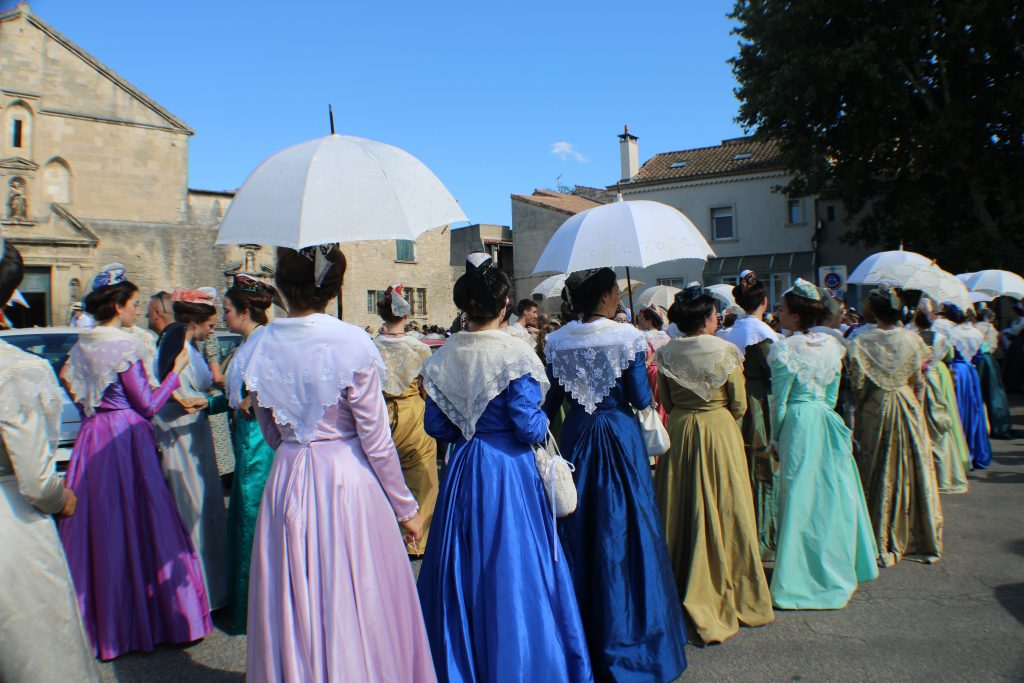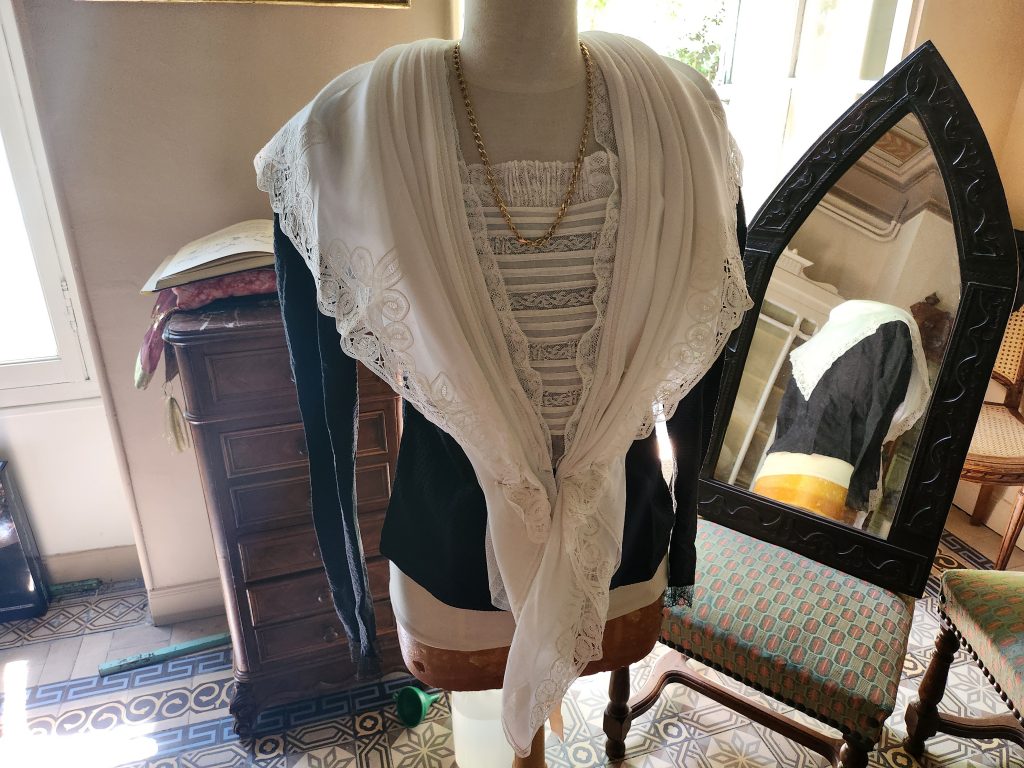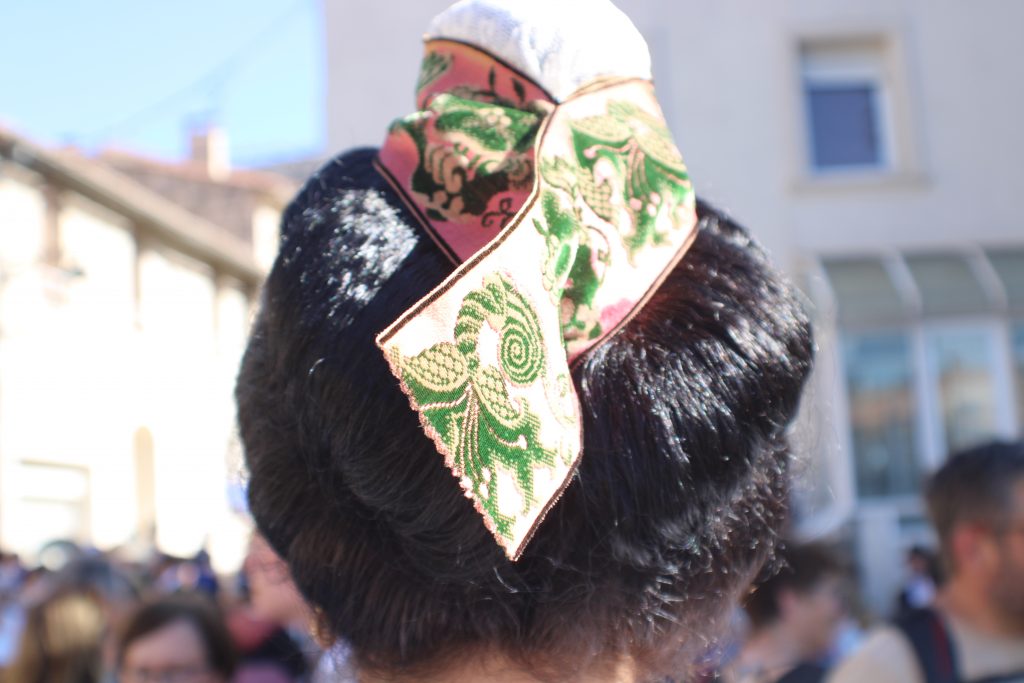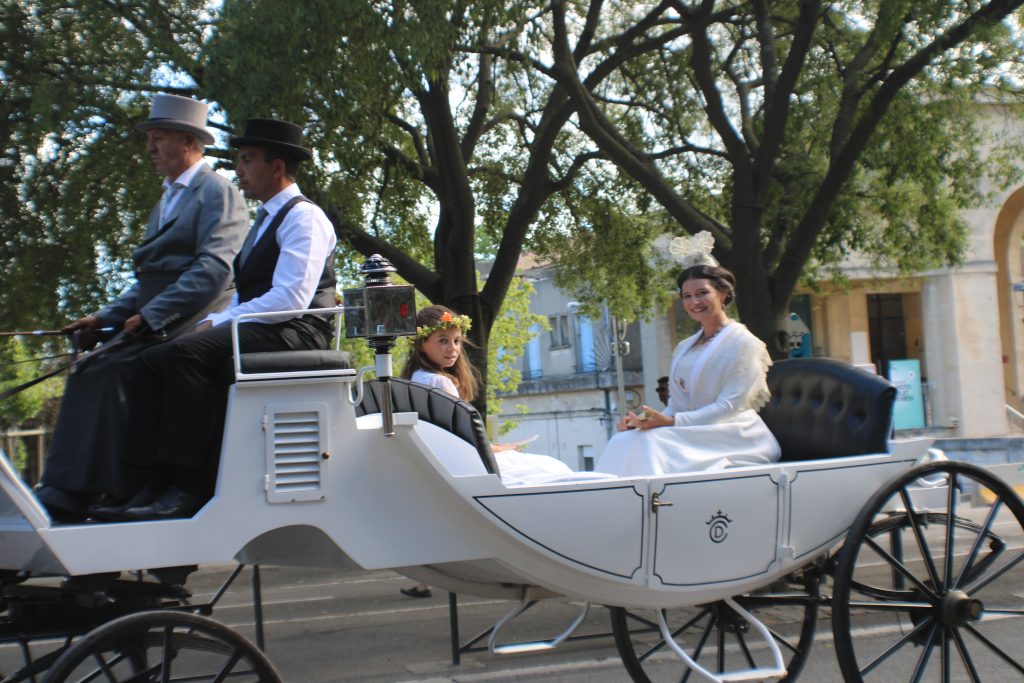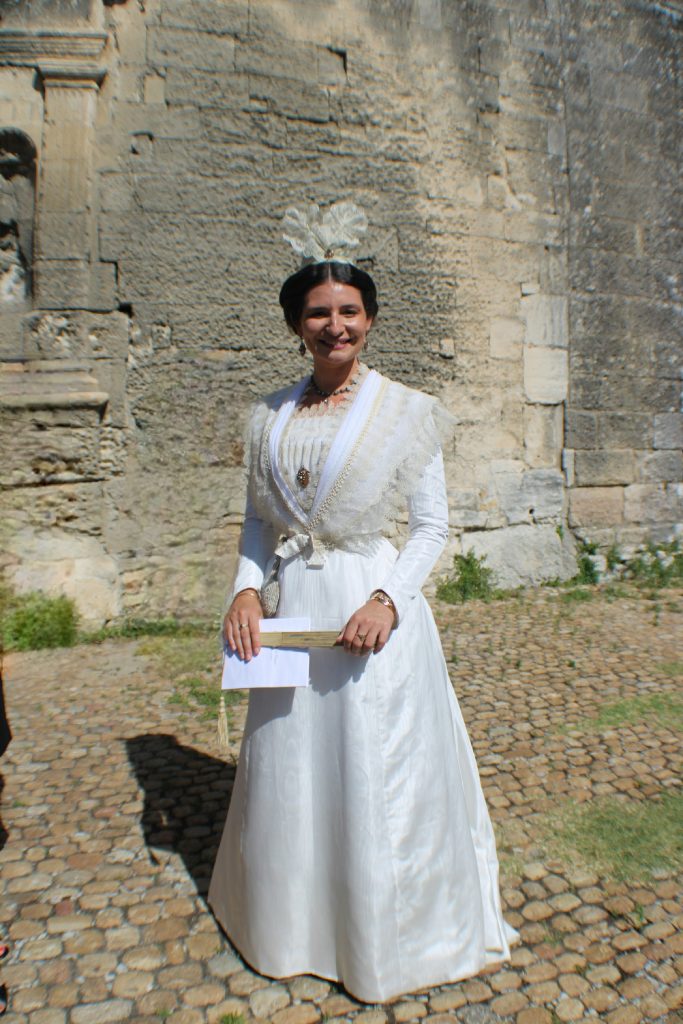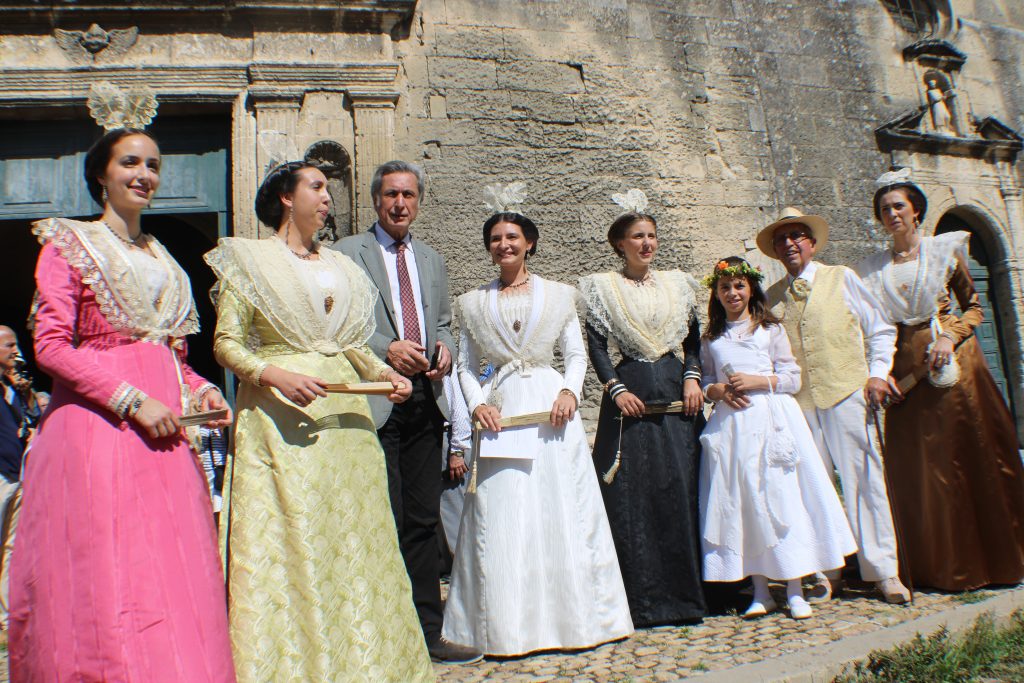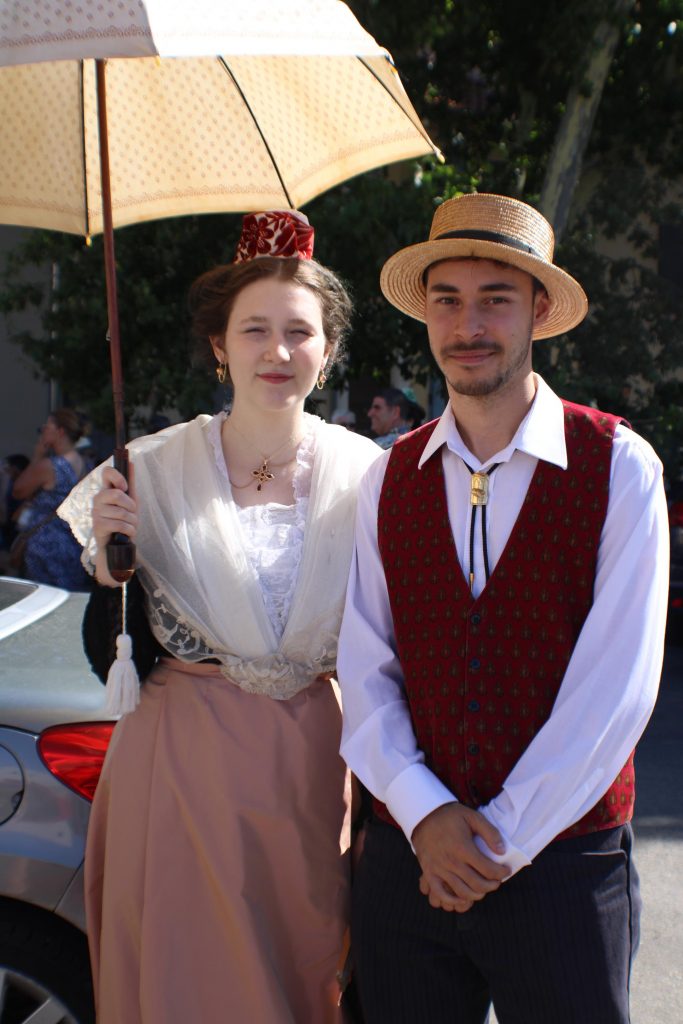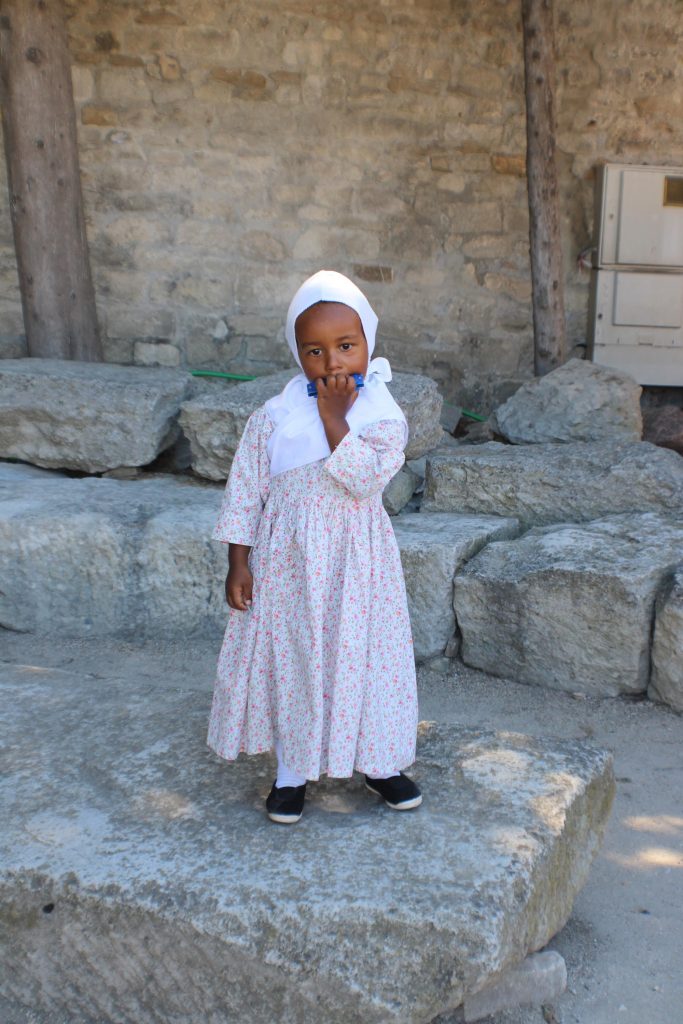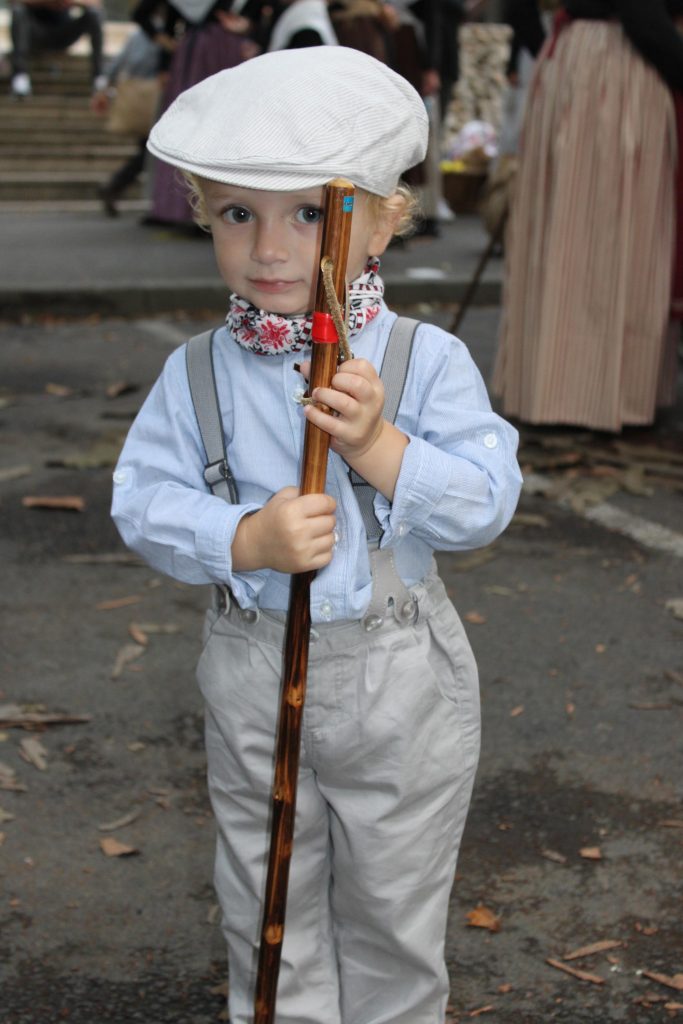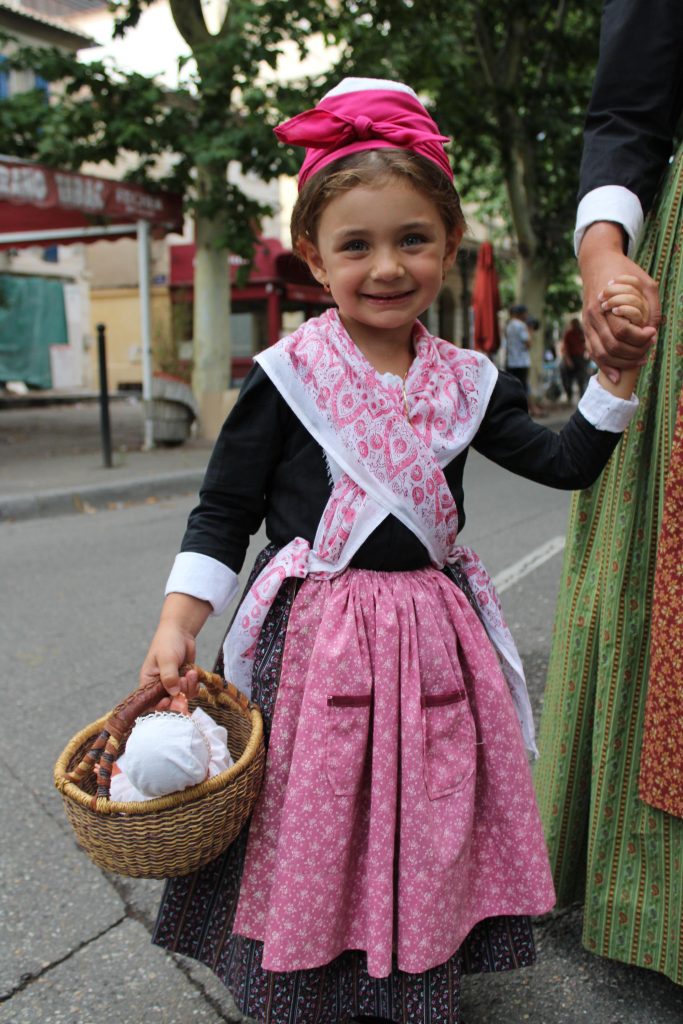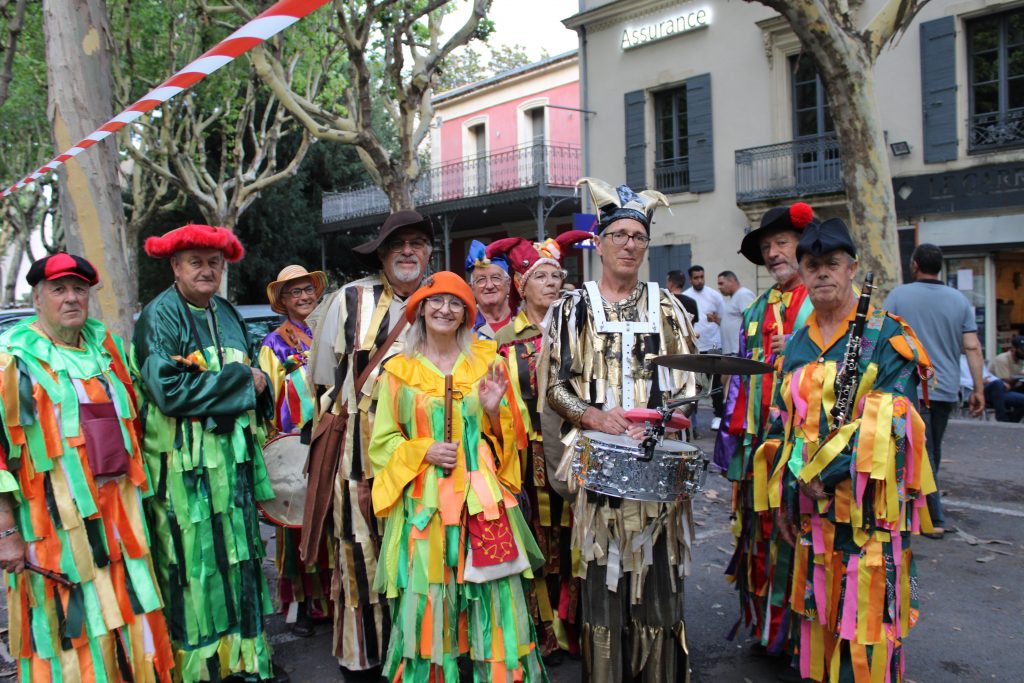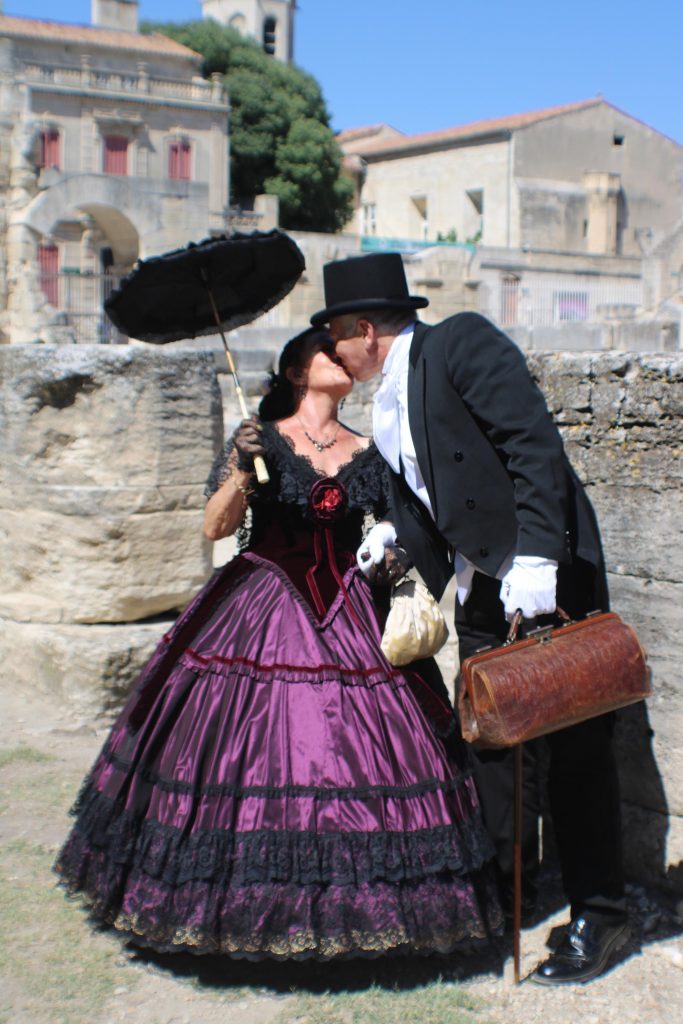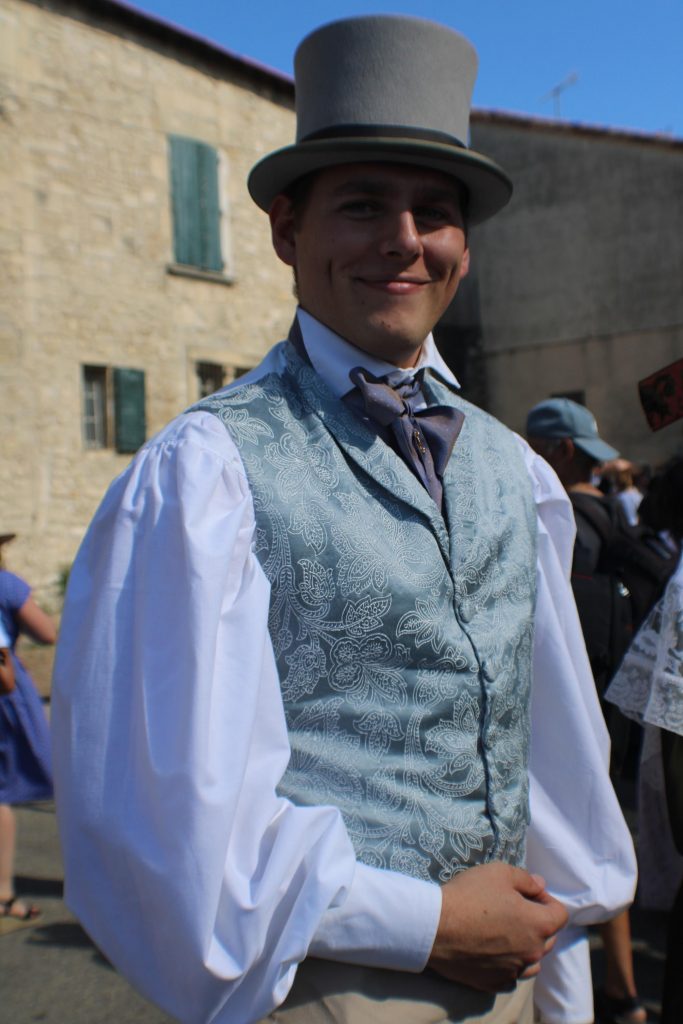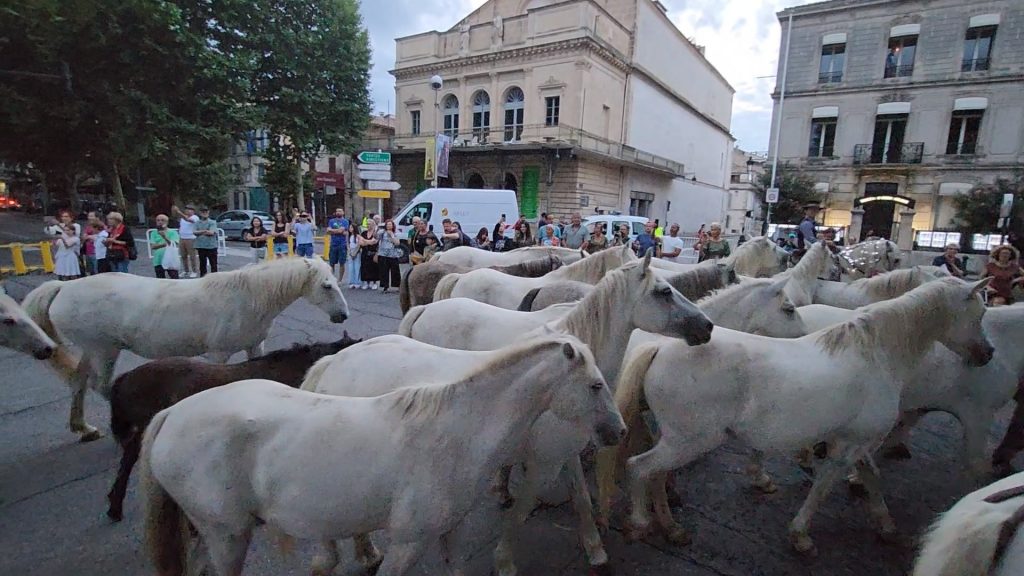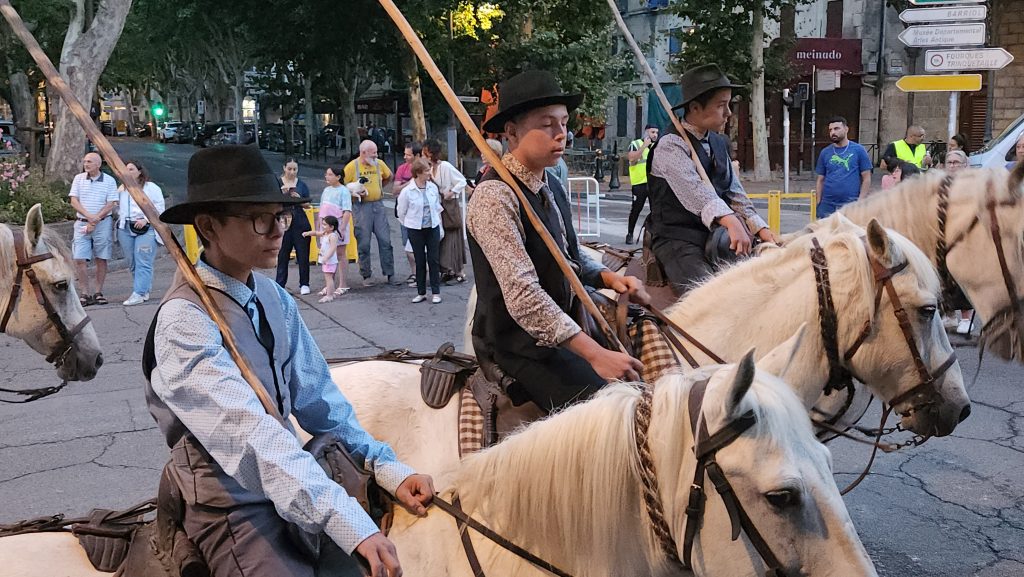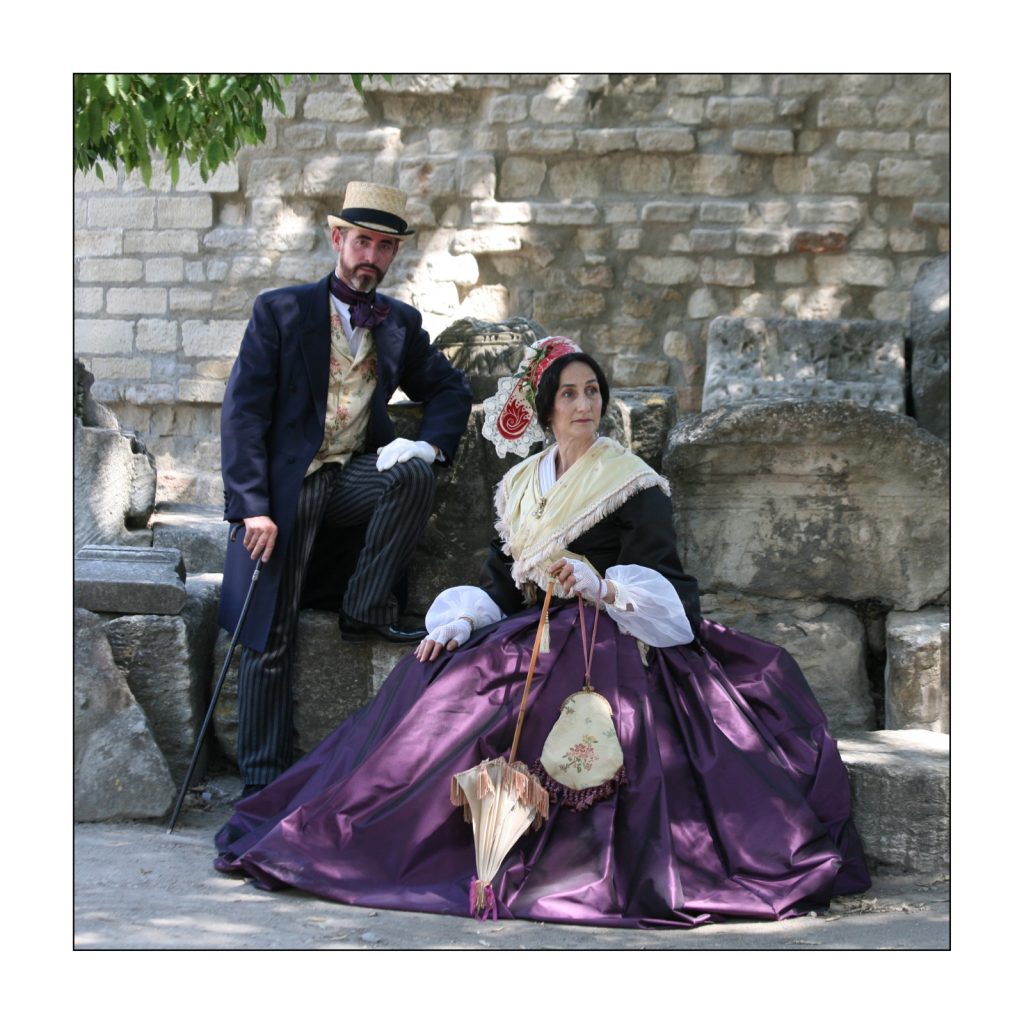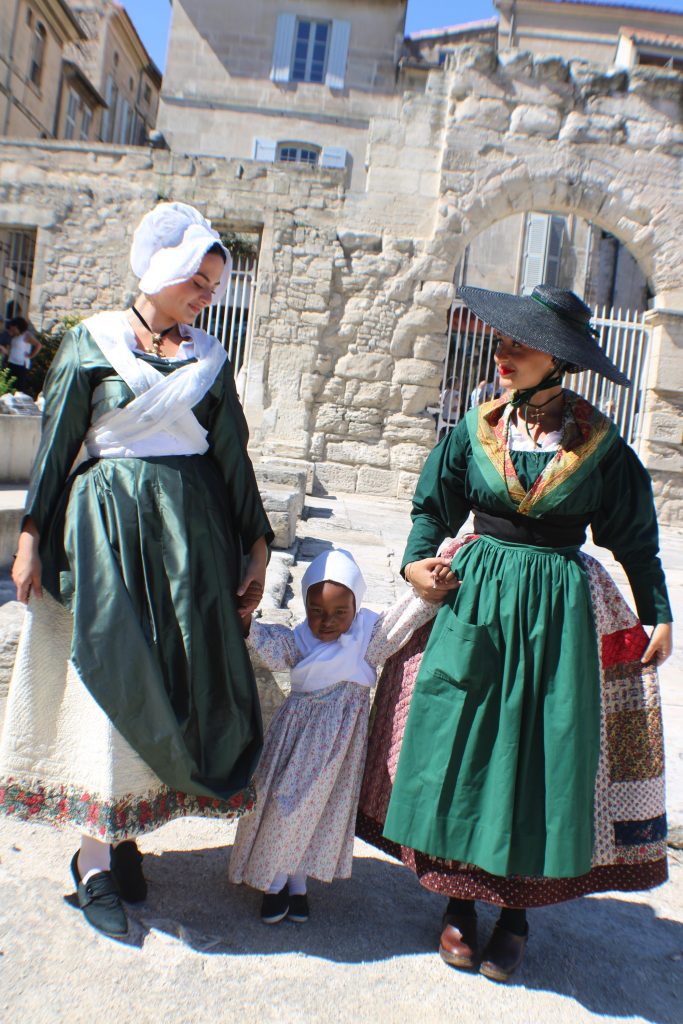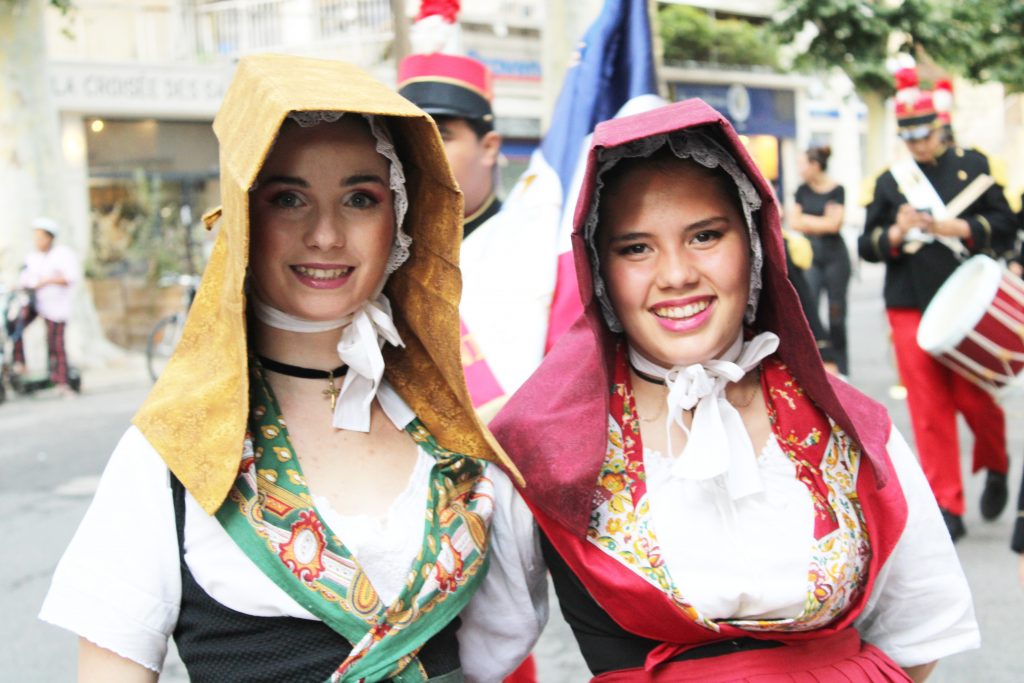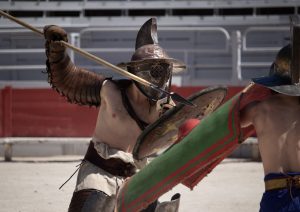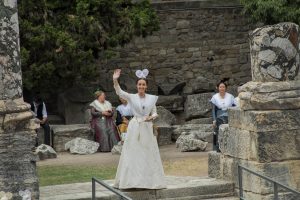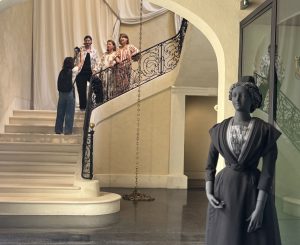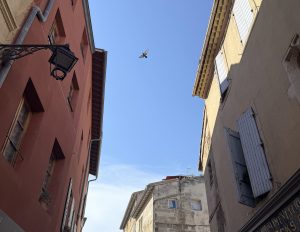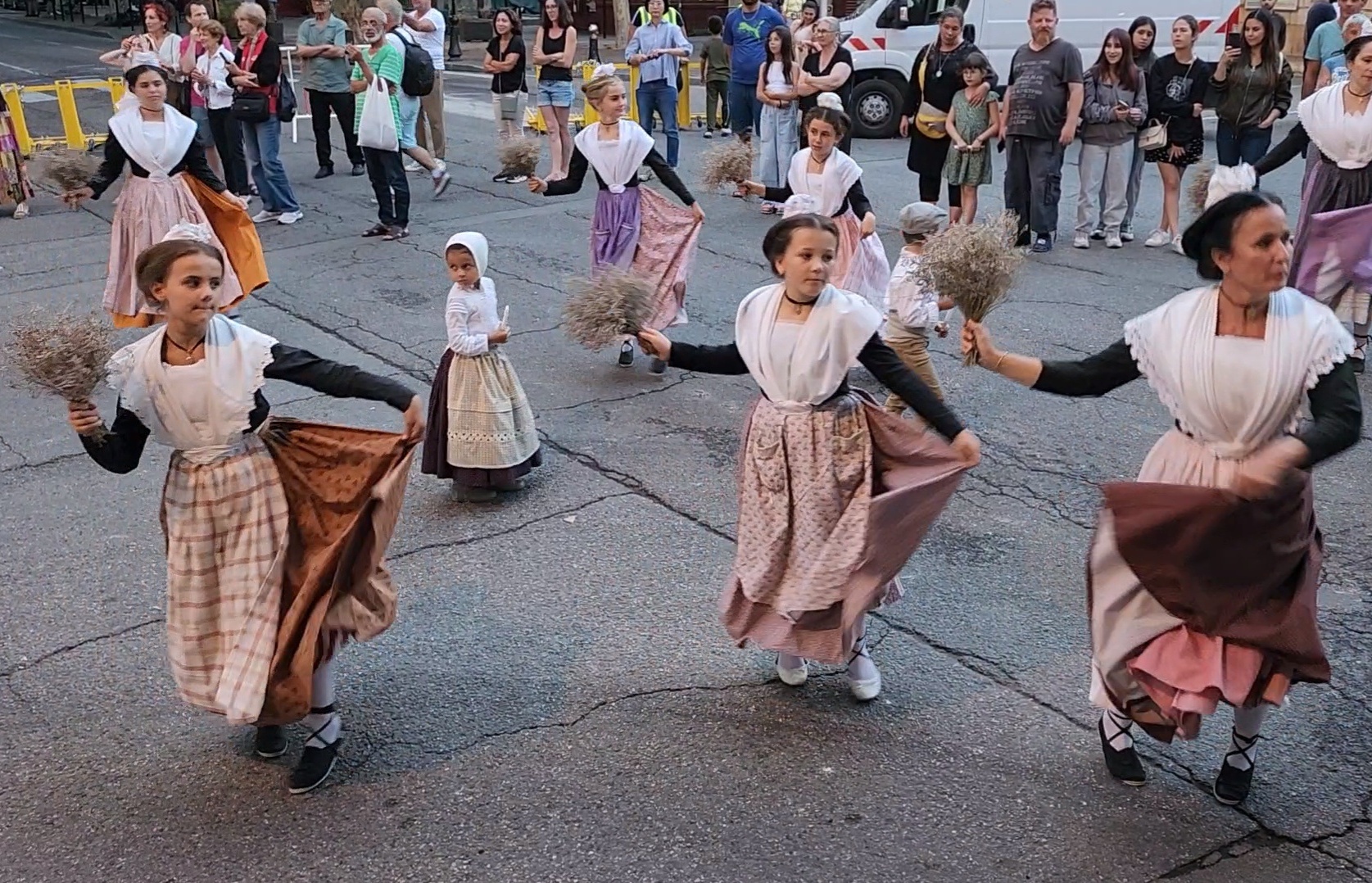
Girls of the Arles parade dressed in 18th century dresses
The Fête du Costume is Arles’ most prominent celebration of Provençal tradition. It is a three-day festival full of parades, bull games, and an overall exhibition of traditional clothing. Only people with at least three generations of ancestry in the city can participate. The fabrics needed to create an ensemble are expensive. Costumes range from the 18th to the 19th century.
The festival started in 1903, instigated by local writer Frédéric Mistral when he created the Festo Vierginenco (Festival of Virgins). According to Avignon & Provence, young girls were invited to wear the dress and hair ribbon to symbolize their passage into adulthood.
Up to age 15, girls wear the Mireille costume composed of a cotton skirt above the ankles, an apron, a black bodice and a simple scarf.
After that age, they wear a more sophisticated dress style that evolved in the 18th century, with the use of jewel-colored satin fabrics, a ribbon and a habit. A delicate lace bodice and shawl complete the costume, flattering the silhouette.
The queen of Arles is elected for three years after showing her knowledge of Provençal history, literature, architecture, arts, traditions, culture and language. The queen is accompanied by women called the “Maidens of Honor,” who are ambassadresses of the region’s traditions, attending local officials at cultural and traditional events. Also present at the festival are gardians, the Camargue “cowboys,” who herd the black Camargue bulls used for the course camarguaise bull games in southern France. Camargue horses galloping through water is a popular and romantic image of the region.
